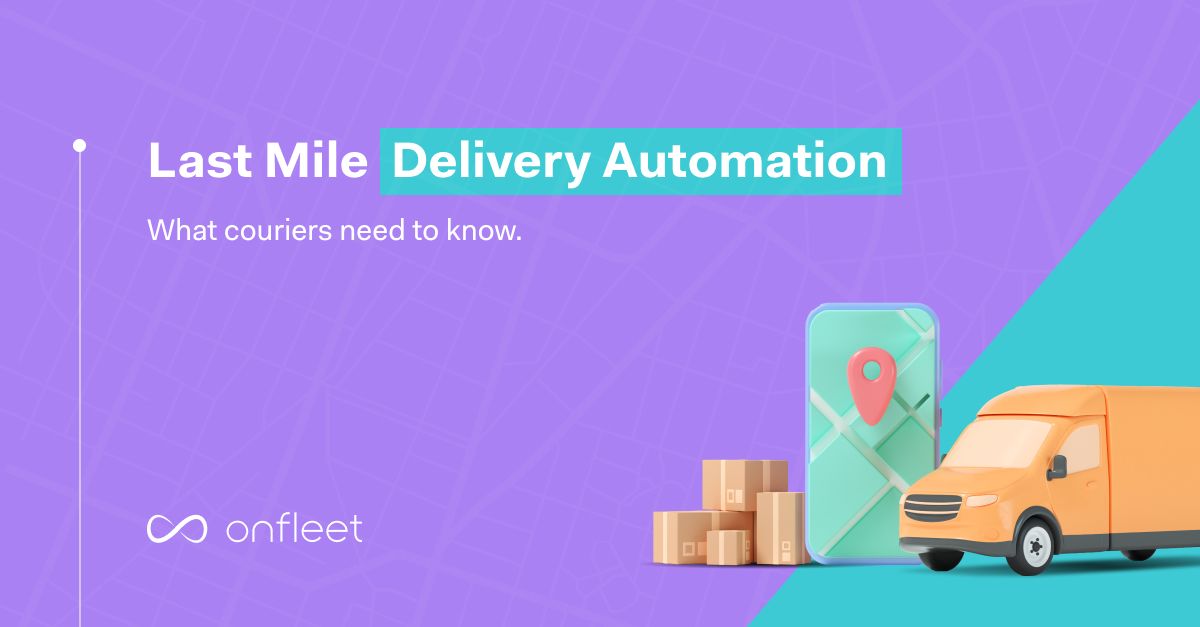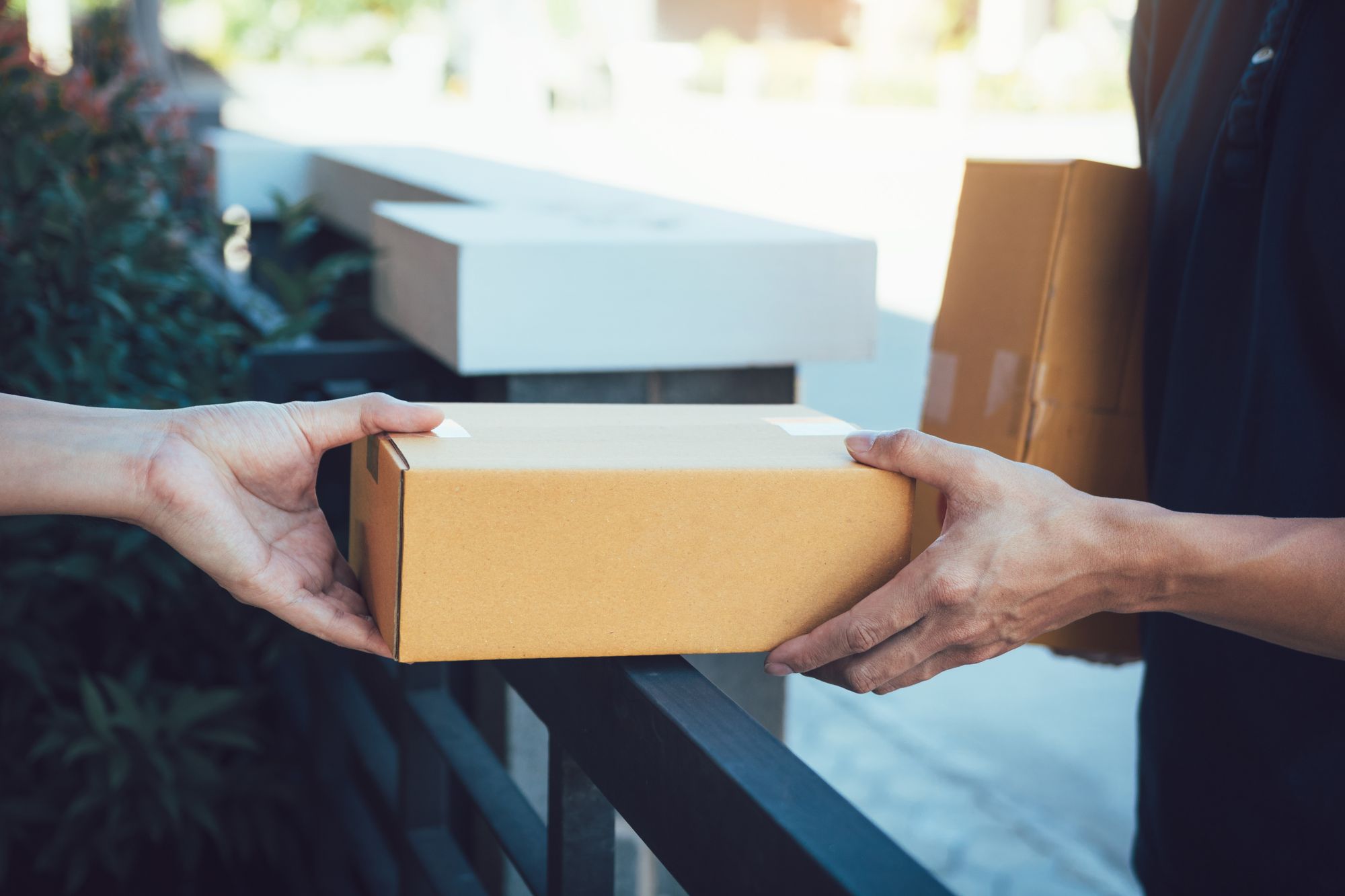
In this rapidly evolving era of e-commerce and logistics, the final leg of the delivery journey has become a critical focal point for businesses striving to meet customer demands for efficiency and convenience. With advancements in technology reshaping the way we approach last mile delivery, it's essential for couriers to stay informed and adapt to these transformative changes.
Join us as we unravel the secrets behind last mile automation and discover how it can empower couriers to deliver with unparalleled speed, precision, and customer satisfaction.
What Is Last Mile Delivery Automation?
Last mile delivery automation refers to the use of technology and automated systems to streamline and optimize the final stage of the delivery process, which involves transporting goods from a local distribution center or fulfillment center to the end customer's doorstep. The "last mile" in the delivery chain is often the most critical and challenging part, as it directly impacts customer satisfaction, delivery efficiency, and cost-effectiveness.
Why Is Last Mile Delivery Automation Important?
Last mile delivery automation has emerged as a crucial game-changer in the logistics industry, offering a multitude of benefits that directly impact couriers, businesses, and customers alike. Let's explore why last mile delivery automation is so important across these key topics:
Customer Service
In the modern age of e-commerce, customer satisfaction is paramount. Automated last mile delivery enables faster and more accurate deliveries, meeting customers' expectations for promptness and reliability. Real-time tracking and notifications keep customers informed about their orders, enhancing transparency and trust.
Efficiency
Efficiency lies at the heart of last mile delivery automation. By leveraging advanced algorithms and technology, automation optimizes delivery routes, enabling couriers to take the shortest and most time-effective paths. This streamlined approach minimizes unnecessary detours, reduces idle time, and ensures faster deliveries, ultimately boosting overall operational efficiency.
Analytics
Automated last mile delivery generates a wealth of data, from delivery times to vehicle performance. By harnessing advanced analytics, couriers can gain insights into their operations' strengths and weaknesses. These data-driven insights help in optimizing delivery processes, reducing operational costs, and identifying opportunities for growth and expansion.
Proof of Delivery
Automated last mile delivery systems often offer digital proof of delivery (POD) capabilities. This feature enables couriers to collect electronic signatures, timestamps, and even photographs as evidence of successful deliveries. Having secure and accurate proof of delivery protects couriers from potential disputes and ensures accountability.
Fuel Costs
With automated route planning, couriers can significantly cut down on fuel consumption. By taking the most direct routes, delivery vehicles travel shorter distances, reducing fuel expenses and contributing to a greener and more sustainable delivery process.
Compliance
Complying with various regulations and restrictions in the last mile delivery process can be a complex task. Automation helps couriers stay in line with legal requirements, such as delivery time windows, weight limits, and specific delivery zones. This not only ensures smoother operations but also helps avoid penalties or legal issues.
Feedback
Automation facilitates the collection of valuable data on delivery performance. Couriers can gather feedback from customers regarding the delivery experience, allowing them to identify potential pain points and areas for improvement. This customer feedback loop enables businesses to make data-driven decisions and enhance their services continuously.

Last Mile Delivery Automation Examples
Last mile delivery automation is reshaping the logistics landscape, revolutionizing the way that couriers and businesses approach their delivery operations. Let’s take a look at some examples of last mile delivery automation use-cases:
Improving Logistics Management
Automation plays a vital role in optimizing logistics management for last mile delivery. Advanced software solutions and machine learning algorithms help couriers analyze historical delivery data, predict demand patterns, and identify potential bottlenecks in the supply chain. By gaining comprehensive insights into their operations, couriers can proactively allocate resources, plan staffing levels, and manage inventory efficiently. Additionally, automated inventory management systems ensure that the right products are available in the right locations, reducing delays and ensuring smoother delivery operations.
Optimizing Routes
Automated route optimization is perhaps one of the most impactful examples of last mile delivery automation. Through sophisticated algorithms, couriers can create the most efficient and cost-effective delivery routes for their drivers. These algorithms take into account real-time traffic data, delivery windows, package sizes, and customer locations to generate optimal routes that minimize travel time and fuel consumption. By optimizing routes, couriers can reduce delivery costs, enhance on-time deliveries, and lessen the environmental impact of their operations.
Scaling Partnerships
Last mile delivery automation has facilitated seamless collaborations between delivery companies and retailers, enabling partnerships to scale and meet growing demands. By integrating automated systems and data-sharing platforms, couriers can synchronize their operations with e-commerce giants, local businesses, and even other logistics providers. This integration streamlines the flow of goods, ensures timely pickups from fulfillment centers, and enhances the overall coordination between all stakeholders involved in the delivery process. Scaling partnerships through automation enhances efficiency, reduces delivery lead times, and boosts customer satisfaction.
Increasing Delivery Capacity
One of the primary advantages of last mile delivery automation is its ability to increase delivery capacity without a proportional rise in labor costs. By incorporating autonomous delivery vehicles, such as delivery drones or self-driving vans, couriers can extend their delivery reach and take on more orders efficiently. These unmanned vehicles can navigate through traffic and congested areas, accessing remote locations that may have been challenging to reach using traditional delivery methods. As a result, couriers can handle a higher volume of deliveries and cater to a broader customer base.
Last Mile Delivery Technology
The world of last mile delivery technology is witnessing an exciting and transformative phase. With the aim of meeting the ever-growing demands of e-commerce and improving overall efficiency, several cutting-edge technologies have emerged to enhance the last mile delivery process—helping businesses to increase their delivery capacity, optimize their routes, and more.
Onfleet is a full-service fleet management platform that allows you to increase on-time deliveries and scale last mile operations without sacrificing the customer experience.
Test drive our platform with a 14-day free trial and see what Onfleet could do for your business.
As we move forward, last mile delivery automation will continue to evolve and refine itself, making the delivery process more agile and responsive to the dynamic needs of modern customers. By staying abreast of the latest technologies and industry trends, couriers can leverage automation to transform challenges into opportunities, and ultimately, to deliver exceptional and unforgettable experiences to their customers.
Learn more about last mile deliveries, as well as other stages of delivery in our blog here.
